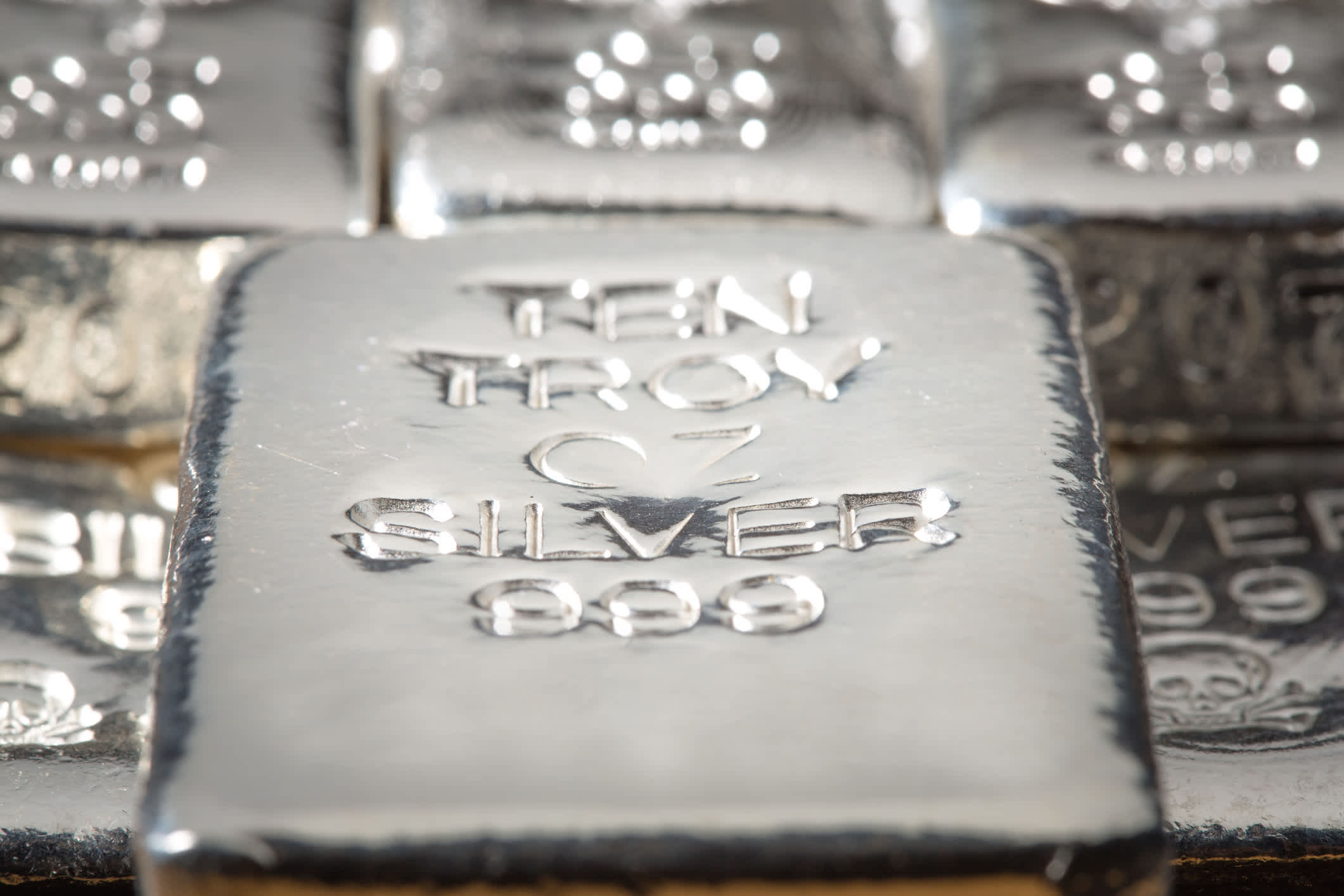As silver trades near seven-year highs, here's why investors continue to pile in

TooTH_PIK | Getty Images
In recent weeks, the silver price has rallied to hit its highest level since 2013. Here, CNBC looks at why investors have been flocking to the precious metal and what's driving its drastic moves.
Gold has traditionally been investors' favorite safe-haven, and is somewhere to turn when bonds offer flat or negative returns and stock markets are choppy. This has certainly been the case during the coronavirus crisis, when the gold price has hit record highs.
But silver has seen even bigger percentage gains in recent weeks.
"It seems like silver is going for the gold medal," said Mobeen Tahir, associate director of research at exchange-traded product provider Wisdom Tree.
The silver spot price, it's real-time value, reached $29 an ounce last week, according to Reuters data. It has since pulled back slightly but still stands at almost $27 an ounce. This represents a seven-year high and a gain of nearly 39% since mid-July when the precious metal rally got into full swing.
Meanwhile, gold is currently trading around $1,947 an ounce and is up nearly 8% since mid-July.
'Trifecta' of drivers
Fundamentally, precious metals have been buoyed by a "trifecta of strong drivers," Ole Hansen, Saxo Bank's head of commodity strategy, told CNBC over the phone.
One of these is the injection of more money into the economy by central banks around the world, as part of attempts to stem the impact of the coronavirus crisis.
Hansen said this monetary easing had created further uncertainty about the health of the financial system, with worries about "an increased mountain debt that needs to be addressed," therefore boosting demand for precious metals as a safe-haven investment.
It has also resulted in real yields heading into negative territory, which means the return investors get on bonds is equal to or below the rate of inflation. It indicates less "opportunity cost" of investing in an asset that doesn't offer a return besides the fluctuation in its price, like gold or silver.
Thirdly, the weakness in the dollar over recent weeks, has also boosted precious metals. As commodities are typically traded in dollars, a weaker greenback often translates into a stronger commodity price.
Gold with a 'rocket attached'
Hansen described silver as "gold with a little bit of a rocket attached," as it tends to rally "higher and faster" than its pricier peer.
This is due to it lower liquidity, although this can also result in a sharp downturn and "really knock you out … when it corrects."
For example, in March when markets sold off in investors' "dash for cash" and hunt for greater liquidity, silver got "utterly hammered," falling over 30% to trade around $12 an ounce.
Gold was also blighted by volatility, but it slipped only 11% to around $1,470 an ounce.
"Gold tends to be less volatile than silver given its superior market size," he explained, adding that the value of gold's annual supply is estimated to be five times larger than silver. Meanwhile, silver tends to be a byproduct from the mining of other metals, such as copper.
"On that basis, a strong rally is less likely to attract increased supply — which could dampen the rally — compared with pure gold mining operations," Hansen added.
But the fact that the silver price is still only halfway to its record high of over $48 in April 2011, while gold has already topped previous records, is helping attract investors to the former, he said.
Guy Foster, head of research at wealth manager Brewin Dolphin, told CNBC's "Squawk Box Europe" last week that his firm had a preference for silver.
The gold-silver ratio — the amount of silver it takes to purchase an ounce of gold — makes " silver look cheaper on that basis."
Industrial use
Foster said Brewin Dolphin's more optimistic global economic outlook meant the industrial demand for silver was an "added benefit."
Indeed, Tahir explained that more than half of silver's demand comes from industrial applications in electronics, medical equipment and solar power generation, for example.
So in addition to its correlation to gold, silver made for a "unique combination" for investors right now, who wanted "to partake in the cyclical recovery, of the economy, of companies, of business and … want to have some sort of defensive hedges in place as well to hedge against all the risks."
"So it's not just a tactical play right now with silver, it's really a strategic play at the same time," Tahir added.
How to invest
As with gold, investors can buy silver in physical bars, but this also requires finding a way to keep it safe, pointed out Hansen.
Exchange-traded funds are "by far the most preferred way of accessing these markets right now," he said. The funds are traded like stocks in real-time, meaning they track movement in the underlying silver price.
More "speculative" investors can also get exposure to silver through futures contracts or "contracts for difference," which are types of derivative. The value of these contracts are based on an underlying asset.
However, this is a more "hands-on trader strategy," Hansen said, which comes with the increased risk you get with leveraged products.
Check out: New report shows historic drop in credit card debt amid the coronavirus pandemic
Source
Check Our More
No comments